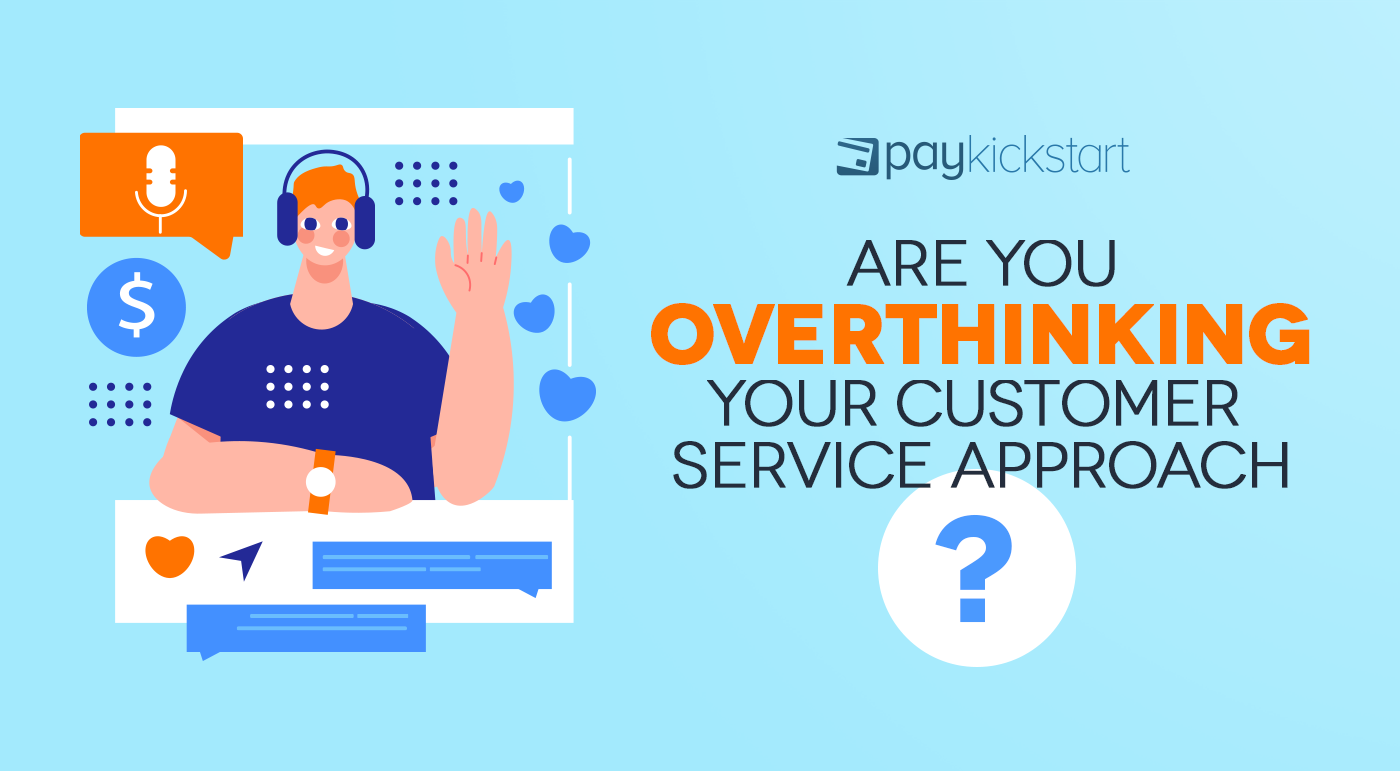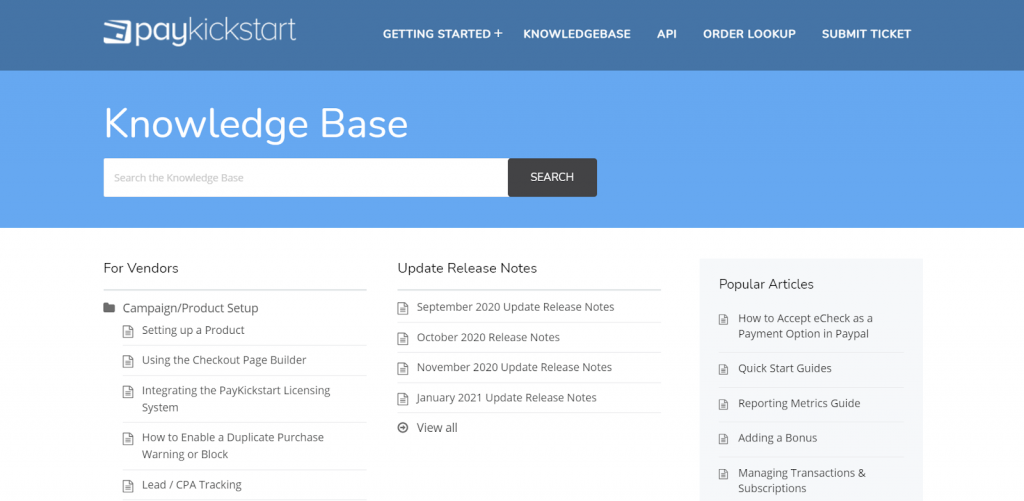Subscription growth hack (by PayKickstart)
Facebook Group - 3,932 members
Visit Group
While the contention that the customer “is always right” doesn’t hold water when taken literally, the spirit of the saying is accurate. Every halfway-competent business owner understands the immense importance of delivering exceptional customer service. If the customer experience you’re delivering moves too far away from what people are expecting (or vice versa), your reputation will tank, your repeat business will drop off, and you’ll struggle to keep going.
It’s understandable, then, that so many ambitious entrepreneurs reach the point of obsessing over how they treat their customers — but this can go much too far. Too much of anything is unhealthy, and overthinking your approach to customer service is inevitably disastrous. At best, it results in diminishing returns for your efforts. At worst, it becomes outright counterproductive.
Unfortunately, it can be hard to tell when you’re putting too much thought into what’s inarguably a key issue. You can start out with excellent intentions and go about things appropriately, then slowly slip into overengineering everything. Before you know it, you’re putting in twice the effort that you need to me, and not getting close to double the results.
In this post, we’re going to look at some of the most common ways in which overthinking customer service can prove an issue, and consider how you should alter your approach to get better results if you’re falling into this trap. Let’s get started.
When you’re particularly eager to impress, you can reach the conclusion that proactivity is the secret ingredient. While other brands are resting on their laurels, you can reach out to your customers in an effort to address problems yet to be reported and remind people that you’re willing and able to help them whenever they need support.
There’s truth in that view, of course. Proactivity is appreciated — but only to a certain extent. Past that point, it becomes irritating. Think of a customer service agent in a store who keeps asking you if you need any help while you’re just browsing, and continues to remind you that they’re available for consultation even though you’re perfectly aware of that fact.
Above all else, you should focus on allowing your customers to shape their service experiences. This is the key motivator behind the modern knowledge base (here’s a great example — or see below), an ever-changing resource that’s accessible to all who need it. The customer can search for the relevant topic (or topics), trawl through tutorials, and find frequently-asked questions (and their answers) — all from their web browser.

If you don’t have such a well-structured body of content, you can start working on one. Using a tool like Crisp.Chat will certainly help, but producing the copy and guides will take a long time. It’s worth it. If you can cover the key issues that come up over and over again, you can remove the need for many support tickets, all while granting your customers a superb level of autonomy.
Anyone who needs your support can still get it, of course: your support options will still be there for people to use, and you’ll still do your best to figure things out when needed. If anything, you’ll be able to provide a stronger service because you won’t be inundated with queries that you shouldn’t have to field. Instead, you can largely focus on the complicated issues and questions that genuinely warrant your focus.
The more time you spend thinking about how to approach customer service, the more time you’re not paying attention to what your customers are saying. This may sound comical, but it’s a legitimate problem. Fixating on what customers might think can lead you to conclude that you know how they think (and thus no longer need to actually find out).
You might even put a lot of time into reading the latest industry suggestions about what people want in general and how you should communicate with them, turning service into an abstraction. That’s making it far too complicated. Speak to your customers, think carefully about what they say, and use that to shape the development of your support system.
This applies even when you get negative feedback, of course, since you can turn that into a positive. What can you do better? How can you change someone’s mind so impactfully that you convert them from your biggest critic to your most ardent supporter? Is this difficult? Very much so. Is it also tremendously valuable if you pull it off? Absolutely.
That aside, note that excess strategizing slows down the process of iterative improvement (Copyblogger has some good points on this). A suitable analogy here might involve someone who keeps coming up with plans for how to live their life but revises them so quickly that they never actually execute any of them. Listen out for the most important problems, then focus on solving them before moving ahead.
Overthinking customer service often results in excessive analysis of individual events and interactions. What went wrong? What can be gleaned? What can be changed? Course correction is justified when there’s evidently a fundamental problem, but something not working out in just one case isn’t a clear indication of such a problem. And what happens when you try to make adjustments too rapidly? You get tonal whiplash.
Tonal consistency is a big deal for modern brands. Customers want to know what they’re dealing with before they reach out to you: that way, they can shape their thoughts accordingly. Are you informal and friendly? Responsive and efficient? Will you try to make them feel better, or stick entirely to finding suitable resolutions to your problems?
And tone isn’t the only thing that needs to be consistent. What you offer to resolve situations should be consistent as well, which means keeping special exceptions to a minimum. If one customer announces on social media that you were extremely friendly and generous, another might respond to say that you didn’t offer them anything close to the same level of service.

Source: Gerd Altmann
Look at it this way: customers looking for help are all in the same position. If you leave some struggling to stay afloat while you attempt to make your rescue efforts extra heroic for others, those people won’t be happy with you even if you ultimately drag them to safety. Yes, you rescued them, but only after showing that they’re second-class customers.
Due to this, achieving a consistent B+ level of service is better than fluctuating between an A and a C. Someone buying from you won’t need to fear a lottery-like experience of ending up happy or wildly dissatisfied. This is one reason why fast-food restaurants are so popular. They don’t make the best food around (far from it), but they’re incredibly reliable and you (almost) always know what you’re getting. The lack of surprises is a big advantage.
Another big reason why overthinking is a danger is that it takes you away from something vital: authenticity. In recent years, many more people have come to care about supporting only the brands they feel deserve their support. You can have the best products and/or services, but if you don’t seem likable or trustworthy, you’ll lose out on business.
Now, every brand will lay claim to being worthy of support, so how do people tell which claims are legitimate? They look for indicators of authenticity. The more authentic a company seems, the more believable its assertions seem — and the more you dwell on the specific elements of the service you’re providing, the more likely it becomes that you’ll lose your authenticity.
Think about the use of focus groups to gauge what people might respond to. If it’s done subtly, it can encourage welcome tweaks — but if it’s done in a heavy-handed way, it will lead people to recoil from the fundamental artificiality. You can optimize, but you can’t over-optimize. If you’re generally happy with the quality of service you’re providing, don’t keep working at it. Allow it to come across as natural and confident. It’ll work to your benefit.
And never forget that real people make real mistakes. Don’t try to pretend that you always get it right, because that immediately leads customers to suspect that you’re cooking the books (so to speak). Frankly admitting to messing up someone’s order can actually make them like you more than they did before. When you make a mistake, you only compound it by denying its existence (foolishly, some companies even decide to attack their customers for pointing out their errors).
You mustn’t take this as an excuse to be wildly unprofessional, of course. No customers want to support companies that are relaxed to the point of apathy. Always strive to provide outstanding customer experiences, but view each failure as a learning experience and an opportunity to do better (instead of viewing it as a business-threatening calamity that must be obscured).
Elliot Mark is an e-commerce writer with several years’ experience working with the biggest online store builders around. Skilled in content and marketing, he loves to share his knowledge with like-minded e-commerce entrepreneurs. Check out his insights on Ecommerce Platforms to learn how to take your online store to the next level.
Read More About Elliot Mark